Today’s Current Affairs: 23rd Oct 2023 for UPSC IAS exams, State PSC exams, SSC CGL, State SSC, RRB, Railways, Banking Exam & IBPS, etc
Table of Contents
Withholding Tax : SC Judgement
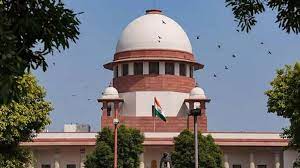
The Supreme Court (SC) recently held that without an express notification, the companies cannot, automatically, claim lower withholding tax of 5%, even if provided for in the Direct Tax Avoidance Agreement (DTAA).
- Withholding tax is withheld or deducted from certain types of income, such as wages, dividends, interest, and royalties, when they are paid to the recipient (non-resident individual).
- It is also known as Retention tax.
- The purpose of withholding tax in India is to ensure that the government receives a portion of the income tax owed by the recipient.
- Withholding tax is applicable in the case of payments made to non-resident individuals.
- If the income is paid in India, the person responsible for payments to NRI must deduct the withholding tax at the time of payment or when the amount is credited to the NRI’s account, according to Section 195 of the Income Tax Act.
- The amount of withholding tax in India depends on the type of income, the amount of income earned, and the tax laws of the country where the income is earned.
- The tax rate is decided as prescribed in the Income Tax Act, 1961, or Double Taxation Avoidance Agreement (DTAA), whichever is lower.
- The central government of India collects this tax.
- India has signed DTAAs with many countries to avoid taxing individuals twice for the same income
- Currently, India has DTAA treaties with more than 80 countries around the world.
Yard 12706 (IMPHAL):

Mazagon Dock Shipbuilders Limited (MDL) delivered the third Stealth Destroyer of Project 15B Class Guided Missile Destroyer, i.e., Yard 12706 (IMPHAL), to the Indian Navy.
- Yard 12706 (IMPHAL) ship is constructed using Indigenous Steel DMR 249A and is among the largest Destroyers constructed in India, with an overall length of 164 metres and a displacement of over 7500 tonnes.
- The ship is propelled by a powerful Combined Gas and Gas Propulsion Plant (COGAG), consisting of four reversible Gas Turbines, which enables her to achieve a speed of over 30 knots (approx 55 Kmph).
- The ship is a potent platform capable of undertaking a variety of tasks and missions, spanning the full spectrum of maritime warfare.
- It is armed with supersonic Surface-to-Surface ‘Brahmos’ missiles and ‘Barak-8’ Medium Range Surface to Air Missiles.
- Towards undersea warfare capability the Destroyer is fitted with indigenously developed anti-submarine weapons and sensors, prominently the Hull mounted Sonar Humsa NG, Heavy weight Torpedo Tube Launchers and ASW Rocket Launchers.
- It is more versatile than the previous classes of Destroyer and Frigates in Naval inventory.
- It has all-round capability against enemy submarines, surface warships, anti-ship missiles and fighter aircraft will enable it to operate independently without supporting vessels, and also to function as the flagship of a Naval task force.
Project 15B:
- Project 15B (P15B) / Visakhapatnam-class is the latest destroyer design currently under construction for the Indian Navy.
- These ships have been designed indigenously by the Indian Navy’s Directorate of Naval Design, New Delhi.
Milan 24 Exercise:
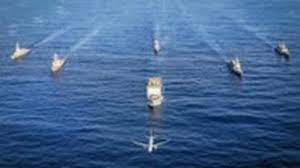
The Mid Planning Conference (MPC) of MILAN 24 Exercise is to be hosted by the Indian Navy at Visakhapatnam from 19 – 27 February 2024.
- Milan Exercise is a biennial multilateral naval exercise.
- It was incepted by the Indian Navy in 1995.
- Originally conceived in consonance with India’s ‘Look East Policy, MILAN expanded in ensuing years with the Government of India’s ‘Act East Policy’ and Security And Growth for All in the Region (SAGAR) initiative to include participation from other Friendly Foreign Countries (FFCs).
- The harbour phase of MILAN 24 will comprise an International Maritime Seminar, City Parade at RK Beach, Swavlamban Exhibition, Subject Matter Expert Exchange, and Milan of Young Officers. Ships, Maritime patrol aircraft, and submarines of Friendly Foreign Countries would participate in the sea phase along with Indian Navy units.
- They will involve large-force manoeuvres, advanced air defence operations, Anti-submarine warfare, and Anti-surface warfare operations.
Ghatiana sanguinolenta : Fresh Water Crab Species
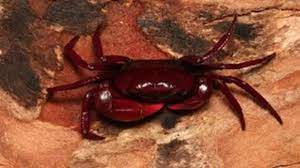
Researchers recently discovered a freshwater crab species, ‘Ghatiana sanguinolenta’ from the Balekoppa village of Sirsi district in northern Karnataka.
- Ghatiana sanguinolenta is a newly discovered species of freshwater crab.
- The crab gets its name from the Latin word ‘sanguinolenta’, meaning ‘red’ or ‘blood-coloured’.
- The crab’s blood-red colour and the outwardly curved article of the first part of the male ‘gonopod’ (genetalia) distinguish it from other species in the Ghatiana subgenus.
- It is currently known only from the type locality, which is situated in the Central Western Ghats of India.
- It is about 1.1 inches wide and about 0.7 inches long.
- It has a “broad,” “strongly arched” body and small eyes.
- Its body has a rich and relatively uniform burgundy red colouring, while the tips of its claws are a lighter cherry red.
- It predominantly resides in water collected within tree trunks and exhibits heightened activity during the rainy season.
- Their diet consists of insects and algae.
- Male and female crabs share the same coloration.
CBSE Merit Scholarship Scheme For Single Girl Child : Registration Extended

The Central Board of Secondary Education (CBSE) recently extended the registration date for the CBSE Merit Scholarship Scheme for Single Girl Child, 2023.
- CBSE Merit Scholarship Scheme for Single Girl Child was launched by the Ministry of Education.
- The scheme is aimed at recognising the efforts of parents in promoting education among girls and providing encouragement to meritorious students.
- The objective of the scheme is to provide scholarships to meritorious single girl students who are the only children of their parents, have passed the CBSE Class X Examination with 60% or more marks, and are continuing their further school education in Classes XI and XII.
- It provides financial aid every month to the selected students, so they can continue their higher education.
- The applicant should be the single girl child of her family.
- The applicant should have secured 60% or more marks in the CBSE Class 10th Examination and be studying Class 11th and 12th in school (affiliated with CBSE).
- The tuition fee should not be more than ₹1,500/- per month during the academic year. In the next two years, the total enhancement in tuition fees in such a school shall not be more than 10% of the tuition fee charged.
- The scholarship offers a maximum of Rs. 500 per month.
- The amount is payable for a maximum period of two year Payment will be made through ECS/NEFT.
- The scholarship is eligible for renewal annually upon successful completion of class XI, contingent upon the scholar’s achievement of 50% or more aggregate marks in the exam determining promotion to the next class.
Guidelines For Designation Of Senior Advocates : Supreme Court
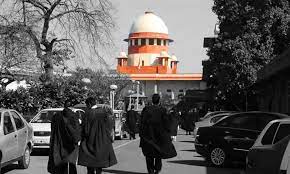
The Supreme Court (SC), in its full court meeting held recently, decided to confer senior designations on 47 former judges of the High Courts.
- The candidates need to be at least ten years’ standing as an Advocate or ten years’ combined standing as an Advocate and as a District and session Judge or as a Judicial Member of any Tribunal in India to be designated as Senior Advocates at the SC.
- They must practice mainly in the Supreme Court, but advocates with domain expertise in practising before specialised tribunals may be given concession.
- The age limit for applying for the designation of senior advocate is now 45 years, unless the age limit is relaxed.
- The age limit can be relaxed by the Committee for Designation of Senior Advocates or if the name has been recommended by the Chief Justice of India or a SC judge.
- The new guidelines have a revised point system for evaluating candidates.
- The new criteria include the number of years of practice and the body of work.
- Number of years of practice: Applicants will get a maximum of 20 points, 10 points for 10 years of practice, and 1 point each for every additional year of practice.
- The selection for the designation of senior advocates will be done by the Committee for Designation of Senior Advocates.
- The Committee is headed by CJI as the Chairperson.
- The applications will be invited once a year, and the committee will meet twice a year.
- It will also have a permanent secretariat, whose members will be selected by the CJI and the committee.
Edakkal Caves : New Project
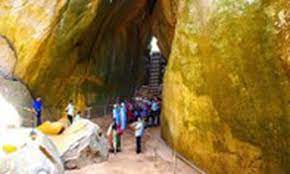
Kerala Tourism launched a 2.9-crore rupee project to improve civic amenities around the Edakkal Caves in Wayanad.
- These caves are located 3,900 feet above sea level in the majestic Ambukuthi Hills.
- The name Edakkal itself means “a stone in between”.
- The unique, intricate stone carvings date back to the Neolithic and Mesolithic ages.
- The caves are two natural formations that are believed to have been formed by a large split in a huge rock.
- These feature Neolithic-era pictorial writings believed to date to at least 6,000 BCE.
- The caves sport human and animal figures besides symbols and letters.
- Inside the caves are pictorial drawings and engravings that indicate the presence of ancient human settlements in the region.
Guillain-Barre Syndrome : Recent study
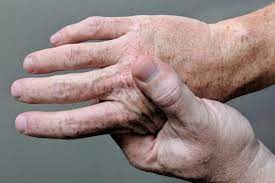
In a recent study from Israel, a connection was found between Covid-19 infection and a higher likelihood of being diagnosed with Guillain-Barre syndrome (GBS) within six weeks.
- Guillain-Barre syndrome is a rare autoimmune disorder where the body’s immune system mistakenly attacks the peripheral nerves.
- It is more common in adults and males, but it can affect people of all ages.
- The first symptoms of this syndrome include weakness or tingling sensations.
- They usually start in the legs, and can spread to the arms and face.
- For some people, these symptoms can lead to paralysis of the legs, arms, or muscles in the face.
- It is often preceded by an infection.
- This could be a bacterial or viral infection.
- The most frequently associated infections include Campylobacter jejuni, Epstein-Barr virus (EBV), cytomegalovirus (CMV), and the bacteria responsible for pneumonia and urinary tract infections.
- It may also be triggered by vaccine administration or surgery.
- There is no known cure for this syndrome.
- The most commonly used treatment is intravenous immunoglobulin (IVIG), which is made from donated blood that contains healthy antibodies.
Restrict Exports Of Graphite : China

China has unveiled plans to restrict exports of graphite—a mineral crucial to the manufacture of batteries for electric vehicles (EVs)—on national security grounds.
- Graphite is an opaque, non-metallic carbon polymorph that is blackish silver in colour and metallic to dull in sheen.
- Since it resembles metal lead, it is also known colloquially as black lead or plumbago.
- It is formed by the metamorphosis of sediments containing carbonaceous material.
- It is a naturally occurring form of crystalline carbon.
- It is extremely soft, cleaves with very light pressure, and has a very low specific gravity.
- In contrast, it is extremely resistant to heat and nearly inert in contact with almost any other material.
- These extreme properties give it a wide range of uses in metallurgy and manufacturing.
Paintbrush Swift Butterfly : Documented For The First Time

The paintbrush swift butterfly has been photographed and documented for the first time in Himachal Pradesh’s Chamba district.
- Paintbrush Swift Butterfly is a butterfly species of the Hesperiidae family.
- The species has never been photographed in Himachal Pradesh since its discovery in 1878.
- This is the first time that we have photographed and documented it.
- It was first described by lepidopterist Frederic Moore more than 145 years ago.
- It is identified based on two separated spots in the upper forewing cell.
- The species’ larvae feed on bamboo and some other grass species.
- Its habitat is distributed in northeast, central and south India, and rare in Uttarakhand.
- Conservation status : This species is legally protected in India under Schedule IV of the Wildlife (Protection) Act, 1972.




